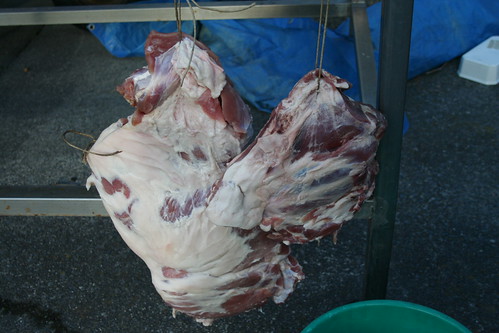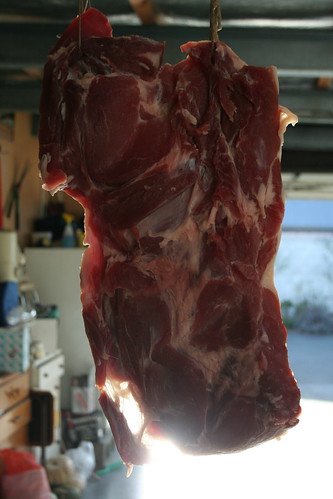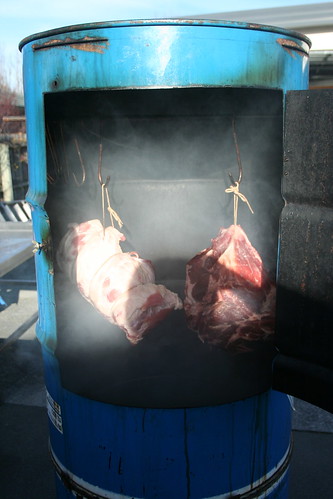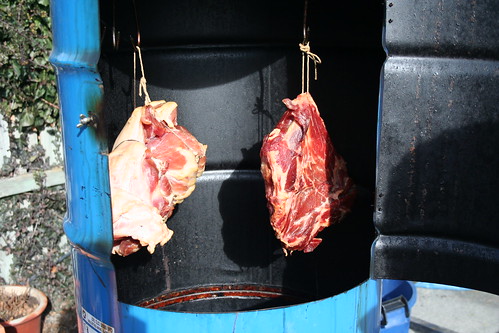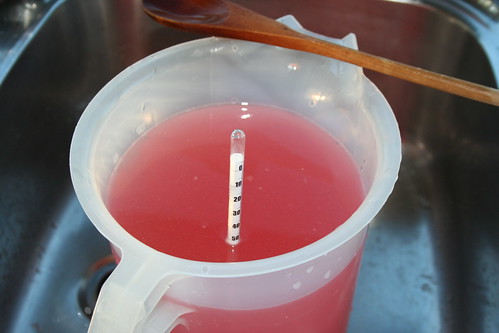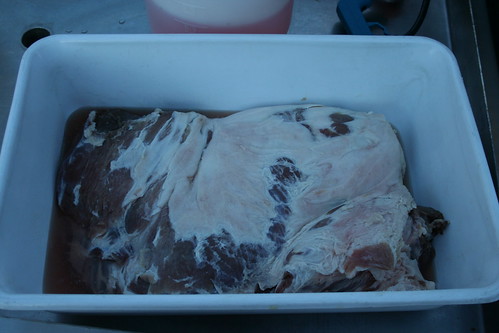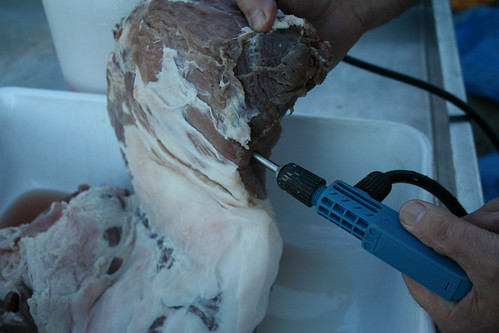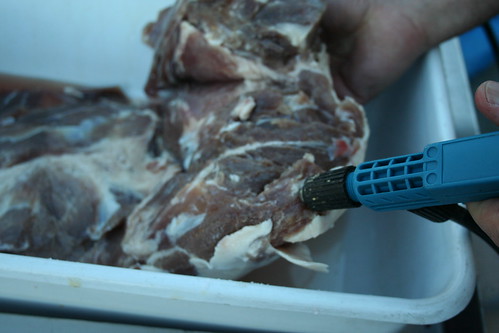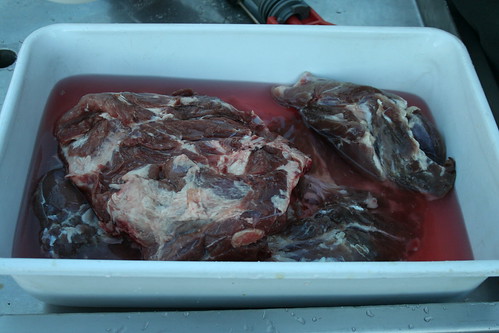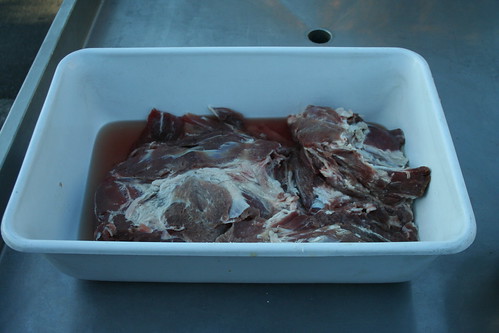Merging Stackless Python 3.1
Releasing a new version of Stackless Python is never a straightforward experience. There are always a range of presumably avoidable problems that seem to pop up and slow the process down.
This time the problems encountered were:
- Pre-existing failures in the Python test suite.
- Changes in the standard Python pickling unit test approach.
- Dynamic behaviour in the unittest.py script involving itself in the Stackless function pickling code.
- TortoiseSVN giving a range of incomprehensible errors.
When there are failures in the Python unit tests in the Stackless build, a good step to tracking them down is to define
STACKLESS_OFF and compile the Stackless source code into standard Python. If the tests fail there, then it might be a mismerge, or it might be that the tests fail in the standard Python branch that was merged from. After compiling and testing the standard Python branch and not seeing test failures there, that then points to a mismerge.In this case, the same tests failed to pass in the standard Python branch. While these false negatives increase the time and effort required to do the merge, they are of course better than having mismerged. They can also be ignored, as the goal of Stackless is to be backwards compatible with standard Python...
The first Python unit test failure was in the distutils tests. It looks like the exported symbol prefix for module initialisation has changed from
init to PyInit_, but a unit test had not been changed to generate a method with the new prefix.test_distutilsThe second unit test failure was within the socket unit tests, something about binding them.
xxmodule.c
Creating library c:\users\richard\appdata\local\temp\tmpbc9aj_\Debug\users\richard\appdata\local\temp\tmpbc9aj_\xx_d.lib and object c:\users\richard\appdata\local\temp\tmpbc9aj_\Debug\users\richard\appdata\local\temp\tmpbc9aj_\xx_d.exp
foo.c
LINK : error LNK2001: unresolved external symbol PyInit_foo
c:\users\richard\appdata\local\temp\tmp6u2yky\tempt\users\richard\appdata\local\temp\tmpa9gpqp\foo_d.lib : fatal error LNK1120: 1 unresolved externals
[37422 refs]
D:\SVN\_python\python-branches\py3k-export\py3k>exit 1
D:\SVN\_python\python-branches\py3k-export\py3k>exit 0
test test_distutils failed -- Traceback (most recent call last):
File "D:\SVN\_python\python-branches\py3k-export\py3k\lib\distutils\msvc9compiler.py", line 635, in link
self.spawn([self.linker] + ld_args)
File "D:\SVN\_python\python-branches\py3k-export\py3k\lib\distutils\ccompiler.py", line 981, in spawn
spawn(cmd, dry_run=self.dry_run)
File "D:\SVN\_python\python-branches\py3k-export\py3k\lib\distutils\spawn.py", line 36, in spawn
_spawn_nt(cmd, search_path, dry_run=dry_run)
File "D:\SVN\_python\python-branches\py3k-export\py3k\lib\distutils\spawn.py", line 77, in _spawn_nt
"command '%s' failed with exit status %d" % (cmd[0], rc))
distutils.errors.DistutilsExecError: command '"c:\Program Files\Microsoft Visual Studio 9.0\VC\BIN\link.exe"' failed with exit status 1120
During handling of the above exception, another exception occurred:
Traceback (most recent call last):
File "D:\SVN\_python\python-branches\py3k-export\py3k\lib\distutils\tests\test_build_ext.py", line 320, in test_get_outputs
cmd.run()
File "D:\SVN\_python\python-branches\py3k-export\py3k\lib\distutils\command\build_ext.py", line 347, in run
self.build_extensions()
File "D:\SVN\_python\python-branches\py3k-export\py3k\lib\distutils\command\build_ext.py", line 456, in build_extensions
self.build_extension(ext)
File "D:\SVN\_python\python-branches\py3k-export\py3k\lib\distutils\command\build_ext.py", line 543, in build_extension
target_lang=language)
File "D:\SVN\_python\python-branches\py3k-export\py3k\lib\distutils\ccompiler.py", line 791, in link_shared_object
extra_preargs, extra_postargs, build_temp, target_lang)
File "D:\SVN\_python\python-branches\py3k-export\py3k\lib\distutils\msvc9compiler.py", line 637, in link
raise LinkError(msg)
distutils.errors.LinkError: command '"c:\Program Files\Microsoft Visual Studio 9.0\VC\BIN\link.exe"' failed with exit status 1120
test_socketLegitimate standard unit test failures
test test_socket failed -- Traceback (most recent call last):
File "D:\SVN\_python\python-branches\py3k-export\py3k\lib\test\test_socket.py", line 498, in testSockName
sock.bind(("0.0.0.0", port))
socket.error: [Errno 10048] Only one usage of each socket address (protocol/network address/port) is normally permitted
Recompiling the merged source code with Stackless enabled showed an additional unit test failure in test_pickle.py. Stackless allows pickling of running code and in order to do this, it alters what gets pickled. In this case, the fix was simply pickling the problematic object, taking the result and and updating the unit test to include it. Of course, the case where Stackless is disabled still needs to be handled.
try:Stackless pickling unit test failure
import stackless
DATA4 = b'\x80\x02cstackless._wrap\nrange\nq\x00K\x00K\x05K\x01\x87q\x01Rq\x02)b.'
except:
DATA4 = b'\x80\x02c__builtin__\nxrange\nq\x00K\x00K\x05K\x01\x87q\x01Rq\x02.'
There was one failure in the Stackless unit tests, to do with pickling a recursive function. Editing the test and reconciling what comes out of
pickletools.dis with the test failure stack trace made it clear what the problem was. It was dynamic behaviour in the unittest.py module, because there were self references in the recursive function being pickled, the test suite instance was being included with the pickled function. On unpickling, a __getattr__ hook in the _WritelnDecorator text UI test running support class was entering an infinite loop. The correct fix here was to remove the self reference to stop the test case instance being dragged into the pickle.TortoiseSVN problems
It used to be that TortoiseSVN just worked. I'd go through the trauma of merging a Python branch and building an installer, and then I could rely on it to do its job. But these days, every time I do a merge, it seems that TortoiseSVN gets flakier and flakier.
When I went to commit the merged Stackless code into our py3k branch, TortoiseSVN complained about how a new file from the original Python branch was already present. I tried to do a "clean up" on the relevant directory, which did not work. I tried to exclude the relevant directory from the commit operation, which resulted in another unclear and apparently irrelevant error to do with recursive commits needing to be done a certain way. Eventually, what worked was reverting the directory and readding it.
With the merged changes committed, there was one more code change to do. The configure script is a unix script and is generated from another file, configure.in. It does not merge well, so the best approach is to not merge it and once all the other merges are checked in, fetch the branch on a Linux machine and rebuild configure there. Then I download the regenerated file to my local machine via the web, and commit it locally. Normally is as straightforward as it sounds and just works, but this time, TortoiseSVN complained about inconsistent line endings. The file has the subversion property of native line endings, and in the past it was just accepted, but not any more. What worked was loading the file up in a decent editor that allowed me to save it out in "unix" format.
Doing the release
I am not releasing Stackless Python 3.1 yet. In order to allow extensions to be compatible with Python builds, there is an official version of Visual Studio that needs to be used for both of these things. And I do not have access to an install of Visual Studio 2008 at this time. At some later stage, I might have the time and interest to download Visual C++ Express 2008, and build the relevant binaries. But I cannot guarantee that the express version of Visual Studio can build installers anyway, which might make it pointless.
So, at this time, Stackless Python 3.1 is not officially released.


